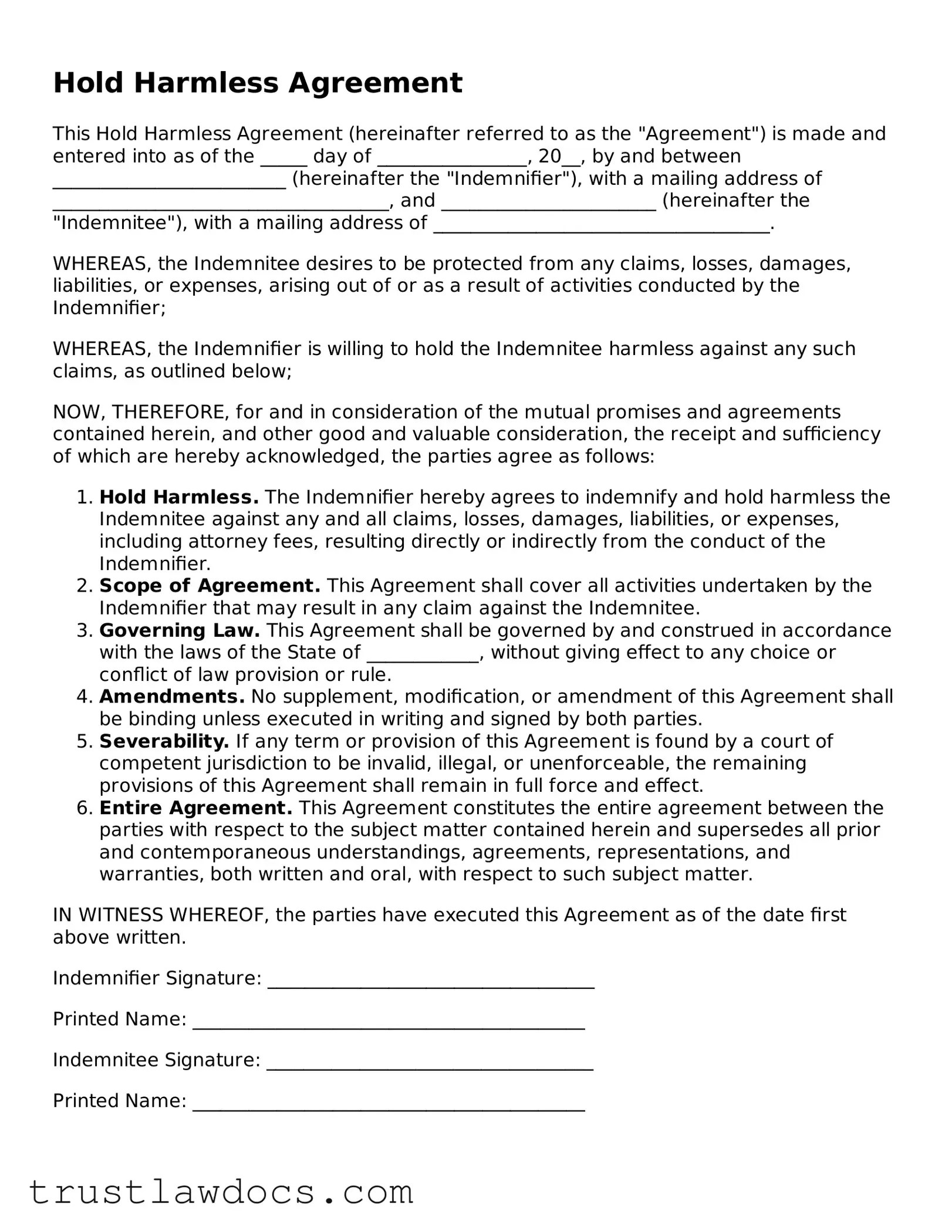What is a Hold Harmless Agreement?
A Hold Harmless Agreement, also known as an indemnity agreement, is a legal document between two parties where one party agrees not to hold the other responsible for any losses, damages, or liabilities. It's often used in situations where there's a risk of financial or physical harm.
When should I use a Hold Harmless Agreement?
This agreement is particularly useful in events, construction, and service-oriented activities where there's potential for accidents or damage. Businesses and individuals use it to protect themselves from lawsuits or claims that can arise during such activities.
Does a Hold Harmless Agreement protect me from all liabilities?
While it offers significant protection, it doesn't cover every possible scenario. The effectiveness depends on how well the agreement is written and the specific laws of your state. Certain liabilities, especially those resulting from negligence, may not always be covered.
Is a Hold Harmless Agreement legally binding in all states?
Most states recognize the enforceability of these agreements, but some have restrictions or specific requirements for them to be considered valid. It’s important to check your state’s laws or consult with a legal professional to ensure compliance.
Can I write a Hold Harmless Agreement myself?
Yes, you can draft this agreement yourself, but it's crucial to include clear terms and ensure it complies with your state's laws. Using a template or consulting a legal professional can help you create a thorough and compliant document.
What information needs to be included in a Hold Harmless Agreement?
The document should clearly identify the parties involved, the activity or service being covered, the specific risks being indemnified against, and the duration of the agreement. Additionally, it should be signed and dated by both parties to be considered valid.
Can a Hold Harmless Agreement be terminated?
Yes, the agreement can include terms for termination. This could be after a certain period, upon completion of the activity, or under other conditions agreed upon by both parties. It should also detail how parties can terminate the agreement if necessary.
Does a Hold Harmless Agreement need to be notarized?
While not always required, getting the agreement notarized can add an extra layer of legal protection and authenticity. It can help in proving the signatures are genuine if the document is ever brought before a court.
What's the difference between a Hold Harmless Agreement and a waiver?
A Hold Harmless Agreement is designed to protect one party from legal claims by the other party. A waiver, on the other hand, is typically signed by a person participating in an activity, agreeing not to sue if they're injured. Essentially, the former deals with indemnity between two parties, while the latter primarily concerns personal injury.
Can both parties be protected under a Hold Harmless Agreement?
Yes, a mutual Hold Harmless Agreement can be drafted to protect both parties from liability or damages resulting from the actions of the other. This is common in partnerships and joint ventures where responsibilities and risks are shared.
